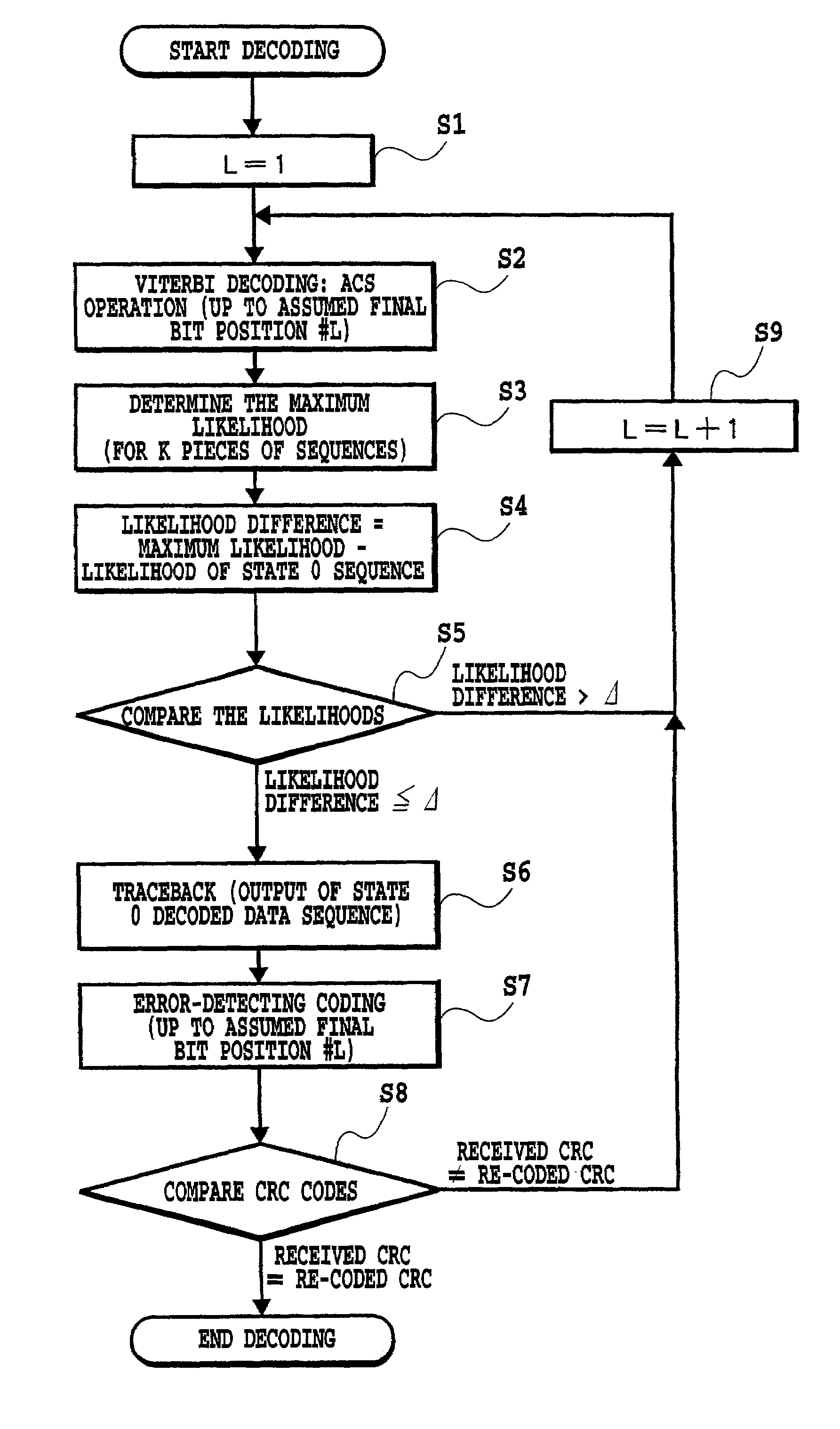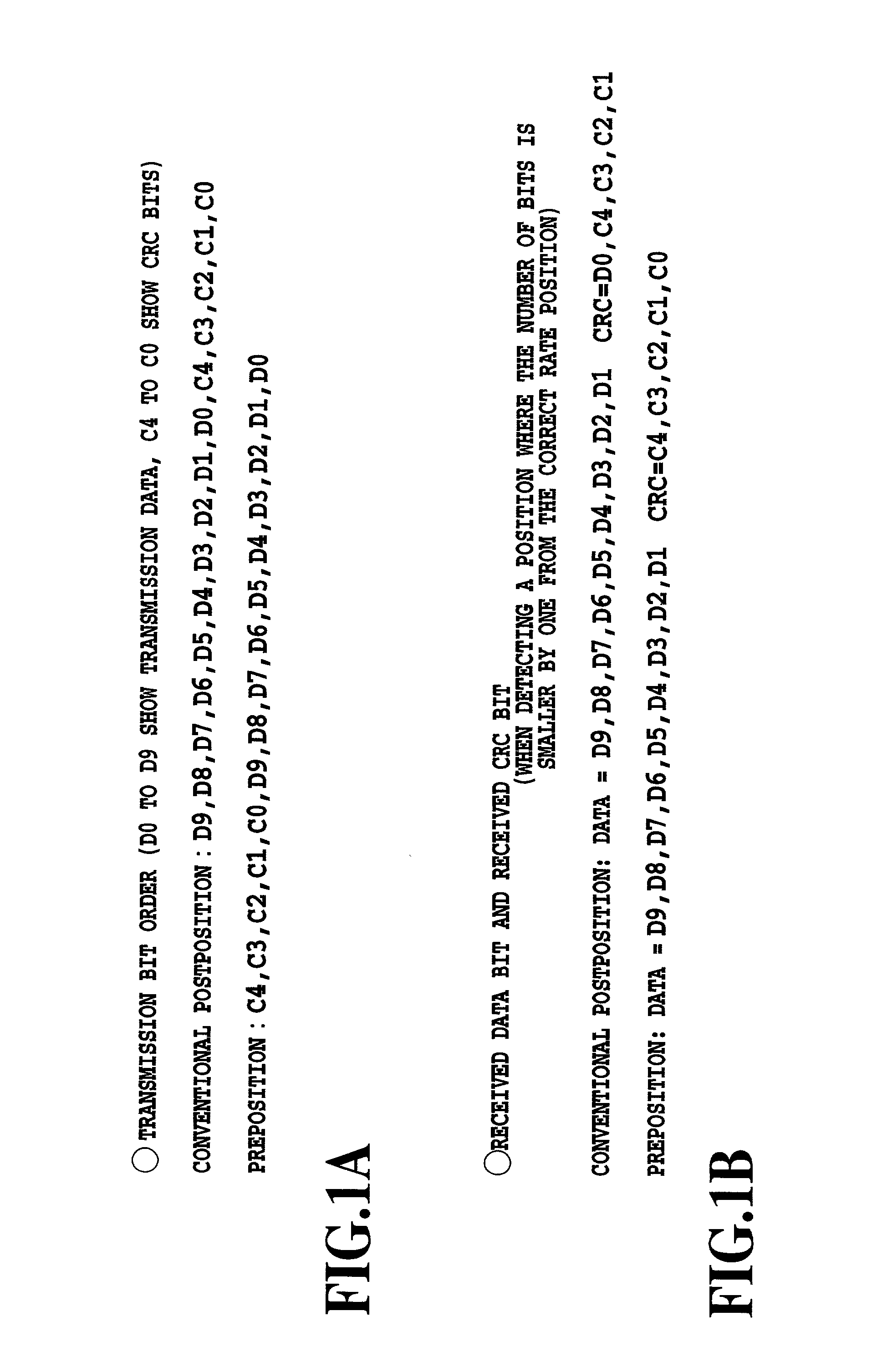Data transmission method, data transmission system, transmitter and receiver
a data transmission system and data transmission technology, applied in the field of data transmission methods, data transmission systems, transmitters and receivers, can solve problems such as hardware scale of the memory, difficult for the receiving side to reproduce transmission data correctly, and inability to judge the effective data length of the received frame, so as to reduce overhead
- Summary
- Abstract
- Description
- Claims
- Application Information
AI Technical Summary
Benefits of technology
Problems solved by technology
Method used
Image
Examples
first embodiment
(First Embodiment)
[0064]FIGS. 3A and 3B show examples of block constructs of a transmitter and a receiver in a first embodiment of the present invention.
[0065]In FIGS. 3A and 3B, a transmission data sequence applied to a terminal 1 is sent both to an error-detecting coder 4 and a multiplexer 6. The error-detecting coder 4 calculates an error-detecting code (CRC parity bits (CRC bits) in this embodiment) for one frame of transmission data only if the frame contains the transmission data. In this embodiment, the word length of the CRC bits is a fixed length.
[0066]In this embodiment, the sum of the length of the transmission data and the length of the error-detection code (CRC bits) in one frame is 4096 bits maximum. The length of the error-detecting code is 16 bits. Thus, the length of the transmission data is 0 (when there is no data) or a value in the range from 1 to 4080 bits. According to this embodiment, the error-detecting code is not sent when there is no transmission data to r...
second embodiment
(Second Embodiment)
[0100]FIGS. 10A and 10B show examples of the block constructs of a transmitter and a receiver in a second embodiment according to the present invention.
[0101]In the configuration of FIGS. 10A and 10B, transmission of information indicating the rate of the transmission data is added to the configuration of FIGS. 3A and 3B, and the receiving side uses this rate information additionally to make the rate decision. In FIGS. 10A and 10B, all the parts common to those of the configurations of FIGS. 3A and 3B are denoted by the same numerals. Description of operations will be given below, focusing on parts different from those of FIGS. 3A and 3B.
[0102]First, information (transmission rate information) indicating the transmission rate of the transmission data applied to terminal 5 is sent to rate information memory 40. Here, the contents of the rate information memory 40 are rate information about the transmission data, namely, the number of bits. A multiplexer 6′ outputs ...
third embodiment
(Third Embodiment)
[0123]Transmission data for a plurality of channels can be multiplexed into (contained in) each frame and the data transmission method described with respect to the first or second embodiment can be applied to only (variable-length data of) some of the channels. For example, if a channel for transmitting a control signal is included in the channels to be multiplexed, the method of the first or second embodiment may be applied to only the control signal transmission channel.
[0124]FIG. 16 shows an example in which transmission data for two channels is contained in one frame. In FIG. 16, the data transmission method described in the second embodiment is applied to one (a first) channel of the two channels. One of the data transmission methods (the method in the second embodiment in which an error-detecting code is added even if there is no transmission data) described in WO00 / 79720, for example, is applied to the other channel (i.e. a second channel). Alternatively, a...
PUM
 Login to View More
Login to View More Abstract
Description
Claims
Application Information
 Login to View More
Login to View More - R&D
- Intellectual Property
- Life Sciences
- Materials
- Tech Scout
- Unparalleled Data Quality
- Higher Quality Content
- 60% Fewer Hallucinations
Browse by: Latest US Patents, China's latest patents, Technical Efficacy Thesaurus, Application Domain, Technology Topic, Popular Technical Reports.
© 2025 PatSnap. All rights reserved.Legal|Privacy policy|Modern Slavery Act Transparency Statement|Sitemap|About US| Contact US: help@patsnap.com



